Accountable Care And Population Health In Time Of Pandemic
The current novel coronavirus (COVID-19) pandemic poses a unique challenge to health systems and provider groups participating in accountable care organizations (ACOs) and other alternative payment models. Like all health care institutions, they will face higher patient volumes, higher patient acuity, and shortages of staff, supplies, and space. However, by participating in models that hold them responsible for total costs of care, they also stand to lose financially as costs of care increase. They also potentially will face limitations on metric collection and reporting and when time and resources are at a premium.
If nothing is done, participation in alternative payment models may dramatically decline as institutions drop out to minimize risk and reporting burden. Therefore, the Centers for Medicare and Medicaid Services (CMS) should update “Extreme and Uncontrollable Circumstances” policies for alternative payment models to reflect today’s reality, and private payers should follow suit. Meanwhile, health systems should creatively leverage their existing population health resources to address COVID-19 challenges.
Risks (And Benefits) For ACOs
As of 2019, 36 percent of all health care spending is linked to shared savings/risk, bundled payments, or population-based payment models while another 25 percent is tied to pay-for-performance or care coordination fees. Without action by CMS and other payers, participants in alternative payment models face several risks:
- Higher rates of costly emergency department visits, hospitalizations, and intensive care unit stays related to COVID-19, negating any shared savings and potentially putting health systems at downside risk for extra costs if annual cost targets are set on a pre-pandemic baseline;
- High-risk complex patients delaying care due to limited in-person care options, medication shortages, and social isolation. While this will reduce outpatient visit volume and elective procedures, it may also lead to more high-cost, high-acuity hospitalizations for patients with chronic medical conditions such as congestive heart failure and chronic obstructive pulmonary disease;
- Inability by clinicians to address preventative and screening metrics (such as colonoscopies and breast cancer screenings) due to fewer elective procedures and office visits, which may result in reimbursement penalties from payers;
- Ongoing reporting burden for inpatient and outpatient quality metric collection and reporting in a situation when hospital resources are more limited than usual; and
- Healthier patients avoiding physician visits completely; resulting in attribution of only sicker, higher-cost patients to ACOs for future years.
Without addressing these issues, participation in alternative payment models becomes riskier as institutions have more to lose. Therefore, institutions will either take on more risk in times of tremendous uncertainty or opt to drop out, reversing the trend of transitioning from fee-for-service to value-based care over the past decade.
There may also be some upsides under alternative payment models. Systems will likely see a reduction in elective procedures and may see a reduction in lower-acuity emergency department visits and other communicable disease spread as people practice social distancing and self-isolation. Also, institutions already participating in alternative payment models may expand their capability for remote monitoring, telehealth, and care management without face-to-face interactions. However, these measures are unlikely to mitigate the risk mentioned earlier.
Potential Solutions—Payers
The Medicare Shared Savings Program ACO and Merit-based Incentive Payment System (MIPS) already have an “Extreme and Uncontrollable Circumstances” policy that has previously applied to counties affected by hurricanes and the California wildfires. The policy is activated if a major disaster or declared public health emergency either impacts clinicians directly or affects a high enough percentage of their patients.
This partially reduces downside risk and sets a minimum quality score based on national averages. However, the current policy does not fundamentally change cost targets or benchmarks (and therefore achieving shared savings is not possible), does not alter reporting requirements, and does not address attribution of healthier patients. It is designed for local emergencies and short-term events (such as hurricanes or wildfires) rather than prolonged, nationwide disasters. Finally, other ACOs including Medicare Advantage, Medicaid, and commercial ACOs have disparate or non-existent policies for adverse events.
Recently, multiple organizations including the American Academy of Family Physicians, the American College of Physicians, the American Hospital Association, and the National Association of ACOs have signed a joint letter to CMS requesting policy changes including:
- Holding clinicians protected from performance-based penalties for 2020, particularly in payment models with downsides. This can be done by removing downside risk or by adjusting for COVID-19–specific impact on financial expenditures, patient attribution, and risk adjustment.
- Holding clinicians harmless from reporting obligations for 2020 given the disruptions to addressing preventative health measures and disruptions to quality reporting.
- Considering additional upfront funding opportunities and reinsurance policies for alternative payment model providers.
- Extending application timelines and deadlines for joining alternative payment models and MIPS measure submissions.
These types of initiatives are also needed across other payers with consistent messages across federal, state, and private insurers. Payers can start by negating downside risk for alternative payment models under the current pandemic. Next, they should consider longer-term changes to baselines given likely increases in costs this year and a relative decrease once the pandemic ends. One way to do so would be to carve out COVID-19–related care from shared savings baselines and costs. Finally, during the pandemic, payers could work to minimize reporting burden to free up resources that could be better used elsewhere. They could also shift reporting primarily to metrics focused on infectious disease management, similar to how CMS is already focusing nursing facility inspections on infection control measures.
CMS should be lauded for expanding the waiver for telehealth visits, although these still require video, which may not be feasible for some older adults, especially those with fewer resources or who are sheltering in place without extended family support. Building on the virtual check-in visit (Healthcare Common Procedure Coding System code G20120) to include an option for parity with a telemedicine visit can encourage providers to hold longer telephone visits, which more adequately replace in-person interactions and prevent hospital admissions.
Potential Solutions—Providers
At the same time, existing population health initiatives can transform to better address patient needs during a pandemic. Telephone and remote support services can be used for respiratory symptom triage (as is the case in my institution). They can also provide remote monitoring and daily check-ins for higher-risk patients who are at home with respiratory symptoms and at an increased risk of decompensation and hospitalization.
Existing population health workers (nurses, care managers, social workers, and physicians) should also continue regular remote outreach to non-COVID-19 patients, taking advantage of the increased flexibility of the telemedicine waiver. Keeping higher-risk patients out of hospitals is vitally important if the hospital capacity is dedicated to acute COVID-19 patients.
Conclusion
Alternative payment models were not designed with a pandemic in mind and will be challenged by current events. During this time, providers should focus on clinical care and should not be burdened by reporting or the threat of downside financial risk. However, it would be unfortunate if alternative payment models and population health initiatives disappear in the COVID-19 response along with the promise that they offer to improve long-term health of patients. Therefore, now is the time for insurers and providers to adapt existing alternative payment model frameworks to face the current pandemic.
Alex Kazberouk | April 3, 2020 | Source






